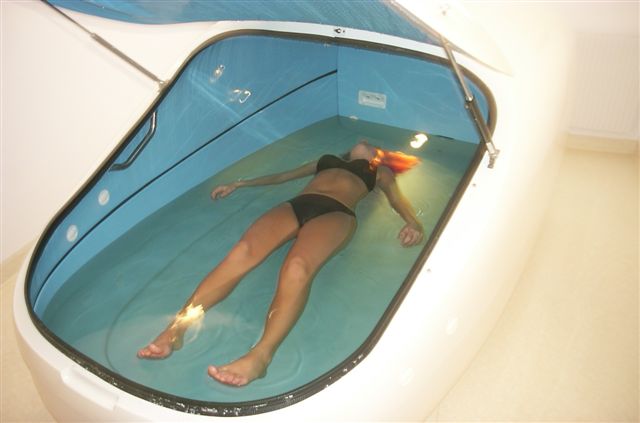FLOATATION
There is nothing like floating! It’s a proven technology that has been around for ages.

What’s the tank-like? It’s filled with a shallow, silky layer of highly saline (Epsom salt), purified water allows you to float on top of the water effortlessly, completely removing the toll of gravity from your body and mind. The water is heated to your skin temperature to blur the sensory boundary between your skin and the water. Finally, an insulated hood blocks out light, sound, and smell. In this perfect oasis, the weight of the world slips away, leaving you afloat in a sublime state of deep relaxation that re-energizes your mind and body from within. When you emerge an hour later, you feel refreshed, recharged, renewed.

Can it make you happier?
Despite the lack of research on happiness and sensory deprivation therapy, some of the self-reported effects are intriguing. People who emerge from flotation tanks frequently report being overcome with joy and exhilaration. People who have completed a chamber REST or darkness therapy report feeling more positive, at peace, and even as if they have been reborn.
The science suggests that sensory deprivation therapy has some significant benefits, and the self-reported ones are particularly interesting. The following article will focus on medical research into this therapy.
Improved Athletic Performance
As 50 highly skilled athletes (28 male, 22 female) were exposed to 45 minutes of float therapy following exercise training for their respective sport, the results showed improved psychological recovery and reduced reported muscular soreness when compared to napping. If you're having trouble with the mental part of sports, this is fantastic news.

The brain isn't the only organ affected by sensory deprivation. Its effect on recovery from hard exercise was investigated in a 2013 study. The authors found that when compared to a passive recovery session, it has a substantial favorable influence on blood lactate and felt pain in a sample of 24 college students.

The Benefits of Floatation Therapy
When you float, you reach a profound relaxation state that helps to alleviate stress by lowering cortisol levels. Endorphins are released as blood flow is increased. Endorphins are brain chemicals that alleviate pain while also eliciting happy emotions.
Floatation treatment has even been proved to aid with depression in studies. The endorphins released during a float session linger longer than the float itself.
When people are floating, they experience excessive buoyancy, which is similar to anti-gravity. This provides much-needed respite to those suffering from joint or muscle discomfort who would otherwise be unable to do so.
Floatation therapy can help pregnant women in a variety of ways. Floating relieves pressure on the feet and back, as well as the extra weight and strain that comes with carrying a baby.
Floating can also assist expectant moms form a symbiotic bond with their babies.
Some women notice parallels between floating and being in the womb, which strengthens their bond with their unborn child.
Before using flotation therapy, pregnant women should seek permission from their doctor.
Migraine relief is provided by a combination of weightlessness, water temperature, improved blood flow, and endorphins.
If migraines are caused by a lack of blood flow, the increased blood flow observed during a float session may help to relieve symptoms and perhaps prevent migraines from occurring.
Floating can help athletes perform better since it cuts down the recovery time between intensive sessions. This enables athletes to train their bodies more quickly and condition them more rigorously.
Trainers frequently advocate and serious athletes employ floatation treatment.
Flotation therapy has been demonstrated to improve overall performance.